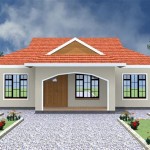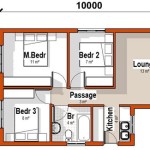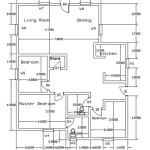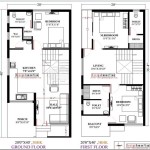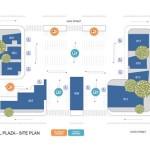Victorian Dollhouse Furniture Plans: A Detailed Guide
Victorian dollhouses represent a fascinating microcosm of domestic life during the 19th century. Their intricate architecture and meticulously crafted furniture provide a captivating glimpse into the aesthetic preferences and social structures of the era. For enthusiasts seeking to recreate this historical ambiance, obtaining accurate and detailed Victorian dollhouse furniture plans is paramount. These plans serve as blueprints for creating miniature pieces that authentically reflect the style, materials, and construction techniques of the Victorian period.
The Victorian era, spanning Queen Victoria’s reign from 1837 to 1901, was characterized by ornate designs, elaborate embellishments, and a focus on comfort and opulence. This aesthetic extended to dollhouse furniture, which mirrored the full-sized counterparts found in Victorian homes. Identifying and utilizing reliable plans is therefore crucial for capturing the essence of this design style in miniature form. This article explores the key aspects of Victorian dollhouse furniture plans, providing guidance on selecting appropriate plans, understanding the design characteristics, and utilizing available resources.
Key Point 1: Identifying Accurate and Detailed Victorian Dollhouse Furniture Plans
The accuracy of Victorian dollhouse furniture plans is directly correlated with the historical authenticity of the finished product. Inferior plans, or those lacking in detail, can result in pieces that deviate from the intended Victorian aesthetic. Several factors contribute to the assessment of plan quality.
First, the source of the plans is important. Reputable sources often include museum archives, historical societies, and established dollhouse design organizations. These sources are more likely to provide plans based on accurate documentation and research. Vintage publications, such as old woodworking magazines and craft books from the Victorian or early 20th century, can also contain valuable plans. However, these plans may require careful assessment and potential modification to ensure compatibility with modern materials and construction techniques.
Second, the level of detail present in the plans is crucial. Detailed plans will include precise measurements, material specifications, and clear diagrams illustrating the construction process. They will also specify the types of joinery used, the decorative elements to be included, and any relevant finishing techniques. Plans that lack these details may leave room for interpretation, but this can also lead to inaccuracies if the builder is not thoroughly familiar with Victorian furniture design. Look for plans that offer multiple views of the furniture piece, including top, side, and front elevations, as well as exploded views that show how the individual components fit together.
Third, the scale of the plans must be considered. The most common scale for dollhouses is 1:12, meaning that one inch on the dollhouse represents 12 inches in the real world. Plans should clearly indicate the scale to which they are drawn, and builders must ensure that the materials and dimensions are adjusted accordingly if a different scale is desired. Inaccurate scaling can result in furniture that is either too large or too small for the intended dollhouse.
Finally, the clarity of the instructions provided with the plans is essential. Even the most accurate plans are of little use if the instructions are unclear or difficult to follow. Instructions should be written in a concise and understandable manner, and they should be accompanied by clear illustrations or photographs that demonstrate each step of the construction process. Builders should also look for plans that include tips and advice on working with miniature materials and tools.
Online repositories, such as digital archives of antique books and craft magazines, can be valuable resources for finding Victorian dollhouse furniture plans. However, it's important to critically evaluate the credibility of the source and the accuracy of the plans before investing time and materials in a project. Cross-referencing information from multiple sources can help to ensure the authenticity of the designs.
Key Point 2: Understanding Key Design Characteristics of Victorian Furniture
Victorian furniture is characterized by several distinctive design features that reflect the aesthetic preferences and technological advancements of the era. Understanding these characteristics is essential for accurately interpreting and executing Victorian dollhouse furniture plans.
One defining feature of Victorian furniture is its ornate embellishment. Carved details, turned spindles, decorative moldings, and applied ornaments were commonly used to enhance the visual appeal of furniture pieces. Plans for Victorian dollhouse furniture should include detailed instructions for replicating these embellishments, either through hand carving, the use of pre-made moldings, or other appropriate techniques. Builders should pay close attention to the scale and proportion of these details, as even minor inconsistencies can detract from the overall authenticity of the piece.
Another characteristic of Victorian furniture is its emphasis on comfort and upholstery. Plush fabrics, padded cushions, and button-tufted details were commonly incorporated into chairs, sofas, and other seating pieces. Plans for Victorian dollhouse furniture should specify the types of fabrics and padding materials to be used, as well as the techniques for creating realistic miniature upholstery. Factors like fabric texture, color, and scale are important considerations.
The use of specific materials is also indicative of Victorian furniture design. Dark hardwoods, such as mahogany, walnut, and rosewood, were favored for their rich color and fine grain. Other materials, such as velvet, silk, and brocade, were commonly used for upholstery and decorative trim. Plans for Victorian dollhouse furniture should specify the appropriate materials to be used, and builders should strive to source materials that are as close as possible to the originals in terms of color, texture, and appearance.
Furthermore, the overall form and silhouette of Victorian furniture are distinctive. Curved lines, elaborate legs, and scrolled arms were commonly used to create a sense of elegance and grandeur. Plans for Victorian dollhouse furniture should accurately depict these shapes and curves, and builders should take care to achieve smooth and precise contours. Templates and jigs can be helpful for replicating complex shapes accurately. Specific styles, such as Rococo Revival, Gothic Revival, and Eastlake, each have unique characteristics that should be considered when selecting plans.
Finally, the hardware used on Victorian furniture, such as knobs, pulls, and hinges, also contributes to its overall aesthetic. Plans for Victorian dollhouse furniture should specify the types of hardware to be used, and builders should strive to find miniature hardware that matches the original designs as closely as possible. Antique brass, porcelain, and glass knobs are common choices.
Key Point 3: Utilizing Available Resources for Victorian Dollhouse Furniture Construction
Creating Victorian dollhouse furniture can be a challenging but rewarding endeavor. Fortunately, numerous resources are available to assist builders in their projects, ranging from specialized tools and materials to online tutorials and communities.
The acquisition of appropriate tools is essential for accurate and efficient construction. Miniature saws, chisels, files, and clamps are indispensable for working with small pieces of wood. Power tools, such as miniature drill presses and sanders, can also be helpful for certain tasks. Precision measuring tools, such as calipers and digital scales, are crucial for ensuring accurate dimensions. Specialized glue applicators and paint brushes are also recommended.
Sourcing appropriate materials can sometimes be a challenge, but a variety of suppliers specialize in miniature craft materials. These suppliers offer a wide range of wood, fabric, hardware, and decorative elements that are specifically designed for dollhouse construction. Online retailers and craft stores are also valuable resources. When selecting materials, it is important to consider the scale of the project and to choose materials that are appropriate for the intended application.
Online tutorials and instructional videos can provide valuable guidance on various aspects of Victorian dollhouse furniture construction. These resources can demonstrate specific techniques, such as carving, turning, upholstering, and finishing, and they can offer tips and advice on overcoming common challenges. Many online communities and forums are dedicated to dollhouse construction, and these platforms can provide a supportive environment for sharing knowledge, asking questions, and receiving feedback.
Joining a dollhouse club or attending dollhouse workshops can provide opportunities to learn from experienced builders and to network with other enthusiasts. These groups often organize events, such as dollhouse shows and demonstrations, that can provide inspiration and valuable insights. Furthermore, historical societies and museums sometimes offer workshops or lectures on Victorian furniture and design, which can enhance builders' understanding of the period aesthetic.
Utilizing digital tools, such as computer-aided design (CAD) software, can be helpful for creating or modifying Victorian dollhouse furniture plans. CAD software allows builders to visualize designs in three dimensions, to experiment with different materials and finishes, and to generate accurate cutting lists. However, it is important to have a solid understanding of Victorian furniture design principles before attempting to create plans from scratch.
Ultimately, the successful construction of Victorian dollhouse furniture requires a combination of accurate plans, appropriate tools and materials, and a willingness to learn and experiment. By carefully selecting plans, understanding the design characteristics of Victorian furniture, and utilizing available resources, builders can create miniature pieces that faithfully reflect the artistry and elegance of the Victorian era.

9 Free Dollhouse Plans Little Of Miniatures

Free Dollhouse Plans Victorian Furniture Doll House Woodworking

Printable Dollhouse Furniture Patterns Victorian Paper Dolls Free Ebo Tutoriales Casa De Muñecas En Miniatura Casas

Templates Dollhouse Miniature Madness And Tutorials

Dollhouse Plans Design 7 Architect S Choice 1 12 Scale Victorian Queen Anne Doll House Woodworking

Dolls House Plans Build Your Own 1 12 Victorian Mansion With Hinged Roof

3d Victorian Doll House Designs By Miss Mandee

Free 3d File Laser Cut Wooden Dollhouse Furniture Set Dxf Ddr Svg Printing Design To Cults
:max_bytes(150000):strip_icc()/remodelaholic-a3b4dfecded6425196e192ab2895e428.jpg?strip=all)
12 Free Dollhouse Plans That You Can Diy Today

Welcome To Victorian Dollhouses Miniatures And

